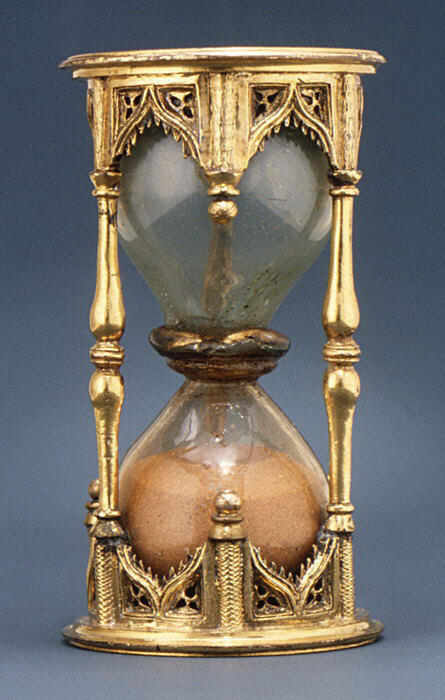Knowledge, Information and Experience
Before it became the symbol of a program stalling on your PC, the hourglass spent centuries as the representation of mortality and an emblem of the sciences. Much more than a symbol, of course, it also kept track of time in the pre-Swatch Era. While the hourglass seems like the kind of primitive tool used by the ancients, its origins are surprisingly somewhat recent — unless its true history has been obscured by the very sands of time.
It has long been thought that hourglasses were certainly an ancient device, thanks especially to an ancient Roman bas-relief that seemed to include one. Recently, however, it was determined that the part of the bas-relief with the hourglass on it was only added in the 16th century.
In fact, the first authentic evidence of hourglasses did not appear until 1338 AD, when Ambrosio Lorenzetti painted a fresco with the personification of Temperance holding an hourglass. Later that century, hourglasses were mentioned in written documents, including a 1345 sales receipt for items bought by the clerk of an English ship, and the inventory taken at the 1380 death of King Charles V of France. So from these three examples, it is clear that by the early 14th century, hourglasses were in common usage by everyone from sailors to kings, and had already taken on symbolic values as a device of measurement.
It makes sense that a ship clerk would have purchased an hourglass, since it is a strong possibility that hourglasses were first developed for maritime use. Before the 14th century, time was measured in unequal hours, based on the durations of day and night on each date. On a ship, however, the measurement of equal hours would have been necessary for calculating the distance traveled . Sand-filled hourglasses would have been preferable to water clocks because, if suspended, they would be relatively unaffected by the motion of the ocean.
So basically all the evidence points to the hourglass being invented around 1000-1100 AD, during that era’s great advances in maritime navigation. This dating gives the hourglass roughly enough time to become widely used and to enter the material record around 1300.
Not everyone, however, is convinced.
Of course, we may never know, unless genuine evidence older than 1338 turns up somewhere. In the meantime, the hourglass is still favored as a desktop accessory (image 10), whether for its associations with Renaissance culture, pirate culture, or with the inexorable passage of time.
Tags: Clarity Is Choice Clear Goal Are Essential










